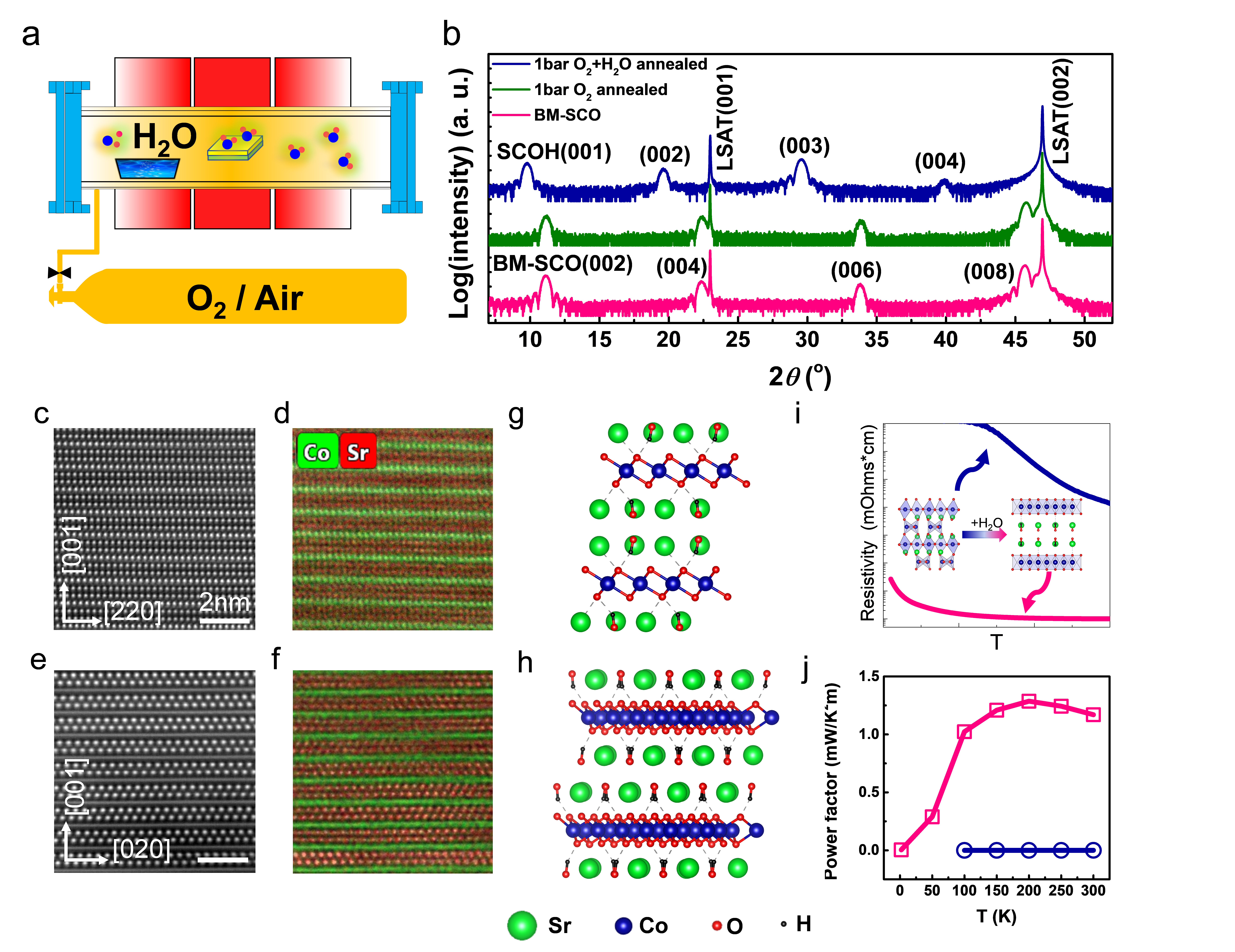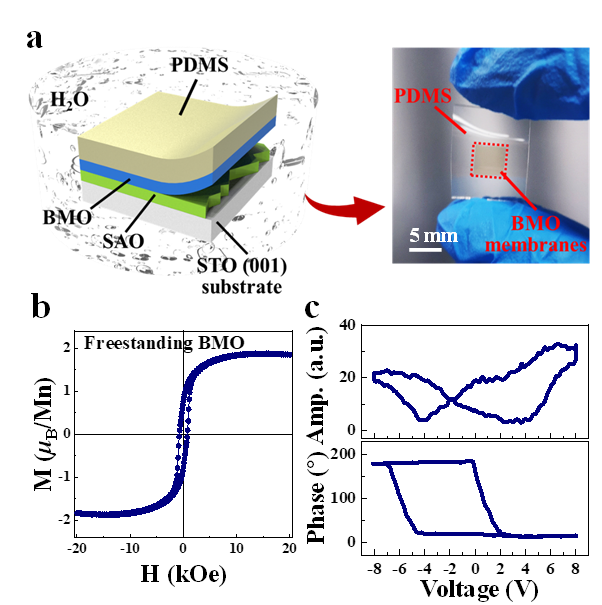Currently, employed cathode materials for proton conducting fuel cells (PCFCs), gas sensors, or membrane reactors suffer from low intrinsic electronic conduction. The rational design and preparation of protonated oxides with high electronic conductivity remains a big challenge.
Scientists from the Southern University of Science and Technology (SUSTech) have made progress in synthesizing new oxides with high hydrogen content and high conductivity.
Protonated 3d transition-metal oxides are garnering significant attention due to many unique advantages like giant magnetoelectric and electrochromic effects, suppression of the thermal conductivity, metal-to-insulator transition, and proton conduction at moderate temperatures.
Despite such a wide functionality range, upon protonation, the as-synthesized transition-metal oxides often display low electronic conduction, hampering their use in electric, magnetic and thermoelectric applications. This absence becomes even worse for catalytic mixed ionic-electronic conductors.
Based on the idea of synthesizing new oxides, Professor Lang Chen’s team from the Department of Physics at SUSTech published their findings entitled “High-conductive protonated layered-oxides from H2O vapor-annealed brownmillerites,” in Advanced Materials, a renowned journal covering materials science.

Creating high conductive protonated oxides
Prof. Chen’s group introduced a scalable, high-yield, and cost-efficient water-vapor annealing method to systematically create high conductive protonated oxides from oxygen-deficient transition-metal oxides.
They illustrated the efficiency and technical soundness of their method by synthesizing the novel layered-oxide SrCoO3H (SCOH) from the brownmillerite SrCoO3-δ (BM-SCO, 0.25 < δ ≤ 0.5) thin film. As expected, the H2O molecules did not induce any reducing or oxidizing process and solely acted as a dopant source. This thermal hydration approach generates high proton concentration layered compounds with high electronic conductivity, H2O uptake, and outstanding thermoelectric power from the insulating BM-SCO parent phase.

Figure 1. (a) Synthesis, (b)~(f) characterization, (g)~(h) structure, (i)~(j) properties of protonated high-conductive SrCoO3H
Compared to the insulating SrCoO2.5, SrCoO3H exhibited an unprecedented high electronic conductivity above room temperature, water uptake at 250 °C, and a thermoelectric power factor of up to 1.2 mW/K2m at 300 K. These findings open up opportunities for creating high-conductive protonated layered-oxides by protons and oxygen ions co-doping.
The first and corresponding authors are Dr. Songbai Hu and Prof. Lang Chen, respectively, from the Department of Physics at SUSTech. This project was supported by the National Natural Science Foundation of China (NSFC), the Science and Technology Research Items of Shenzhen, and the and High-level Special Funding.
Obtaining flexible freestanding membranes with stable ferroelectricity and ferromagnetism
At the same time, Prof. Chen’s group recently made progress in BiMnO3 multiferroic oxide films. Their related findings, entitled “Super-Flexible Freestanding BiMnO3 Membranes with Stable Ferroelectricity and Ferromagnetism,” were published in Advanced Science.

Figure 2. (a) Schematic diagram of BiMnO3 epitaxial films and freestanding flexible membranes. (b)~(c) Ferromagnetism and ferroelectricity of freestanding BiMnO3 membranes.
Owing to their bendable and foldable capabilities, flexible materials have attracted considerable attention in recent years. Substantial efforts have been made in wearable electronics, such as electronic skins, wearable physiological monitoring devices, thin-film transistors, and so on.
BiMnO3, as the sole strong ferromagnetic insulator in transition-metal perovskite oxides, was reported recently to show ferroelectricity when subjected to epitaxial strain. Being a rare multiferroic system with simultaneous ferroelectricity and ferromagnetism, the realization of flexibility in BiMnO3 is fascinating in rewarding the development of future multifunctional devices.
By growing a water-soluble sacrificial layer, Prof. Chen’s group recognized the flexibility of the BiMnO3 films. The transferred membranes exhibit super-flexible with stable ferromagnetism and ferroelectricity (Figure 2).
The first author of the paper is Cai Jin, a Ph.D. student from SUSTech, and Prof. Lang Chen is the corresponding author.
Paper links (In order of appearance above):
Advanced Materials: https://doi.org/10.1002/adma.202104623
Advanced Science: https://doi.org/10.1002/advs.202102178
To read all stories about SUSTech science, subscribe to the monthly SUSTech Newsletter.
Proofread ByAdrian Cremin, Yingying XIA
Photo By